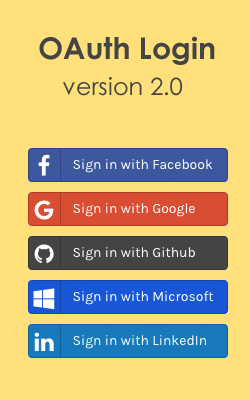Great Free Hacking Softwares? take a look at this list with some of my favourite hacking tools which you can download and use it carefully.
1. Nmap Security Scanner
 Nmap ("Network Mapper") is a free and open source (license) utility for network exploration or security auditing. Many systems and network administrators also find it useful for tasks such as network inventory, managing service upgrade schedules, and monitoring host or service uptime. Nmap uses raw IP packets in novel ways to determine what hosts areRead more...
Nmap ("Network Mapper") is a free and open source (license) utility for network exploration or security auditing. Many systems and network administrators also find it useful for tasks such as network inventory, managing service upgrade schedules, and monitoring host or service uptime. Nmap uses raw IP packets in novel ways to determine what hosts areRead more...2. Tor:anonymity online
 Tor is a software project that helps you defend against traffic analysis, a form of network surveillance that threatens personal freedom and privacy, confidential business activities and relationships, and state security. Read more...
Tor is a software project that helps you defend against traffic analysis, a form of network surveillance that threatens personal freedom and privacy, confidential business activities and relationships, and state security. Read more...3. Net
 Net Tools is a comprehensive set of host monitoring, network scanning, security, administration tools and much more, all with a highly intuitive user interface. It's an ideal tool for those who work in the network security, administration, training, internet forensics or law enforcement internet crimes fields. Net Tools is mainly written in Microsoft Visual Basic 6, Visual C++, Visual C# and Visual Studio .NET.Read more...
Net Tools is a comprehensive set of host monitoring, network scanning, security, administration tools and much more, all with a highly intuitive user interface. It's an ideal tool for those who work in the network security, administration, training, internet forensics or law enforcement internet crimes fields. Net Tools is mainly written in Microsoft Visual Basic 6, Visual C++, Visual C# and Visual Studio .NET.Read more...4. sol Editer
 A flash hacking alternative to variable editing and cheat engine, you can change values saved by the game in a “.sol” file. You will find the .SOL files in x:\Documents and Settings\[account-name]\Application Data\Macromedia\Flash Player\#SharedObjects\ followed by the name of the website. If the game was running from your computer, the .SOL will be in the “localhost” folder. Replace ‘x’ with your main drive, the one with your OS, and the account-name with the currently logged in user.Download...
A flash hacking alternative to variable editing and cheat engine, you can change values saved by the game in a “.sol” file. You will find the .SOL files in x:\Documents and Settings\[account-name]\Application Data\Macromedia\Flash Player\#SharedObjects\ followed by the name of the website. If the game was running from your computer, the .SOL will be in the “localhost” folder. Replace ‘x’ with your main drive, the one with your OS, and the account-name with the currently logged in user.Download...5. Cain & Abel
 Cain & Abel is a password recovery tool for Microsoft Operating Systems. It allows easy recovery of various kind of passwords by sniffing the network, cracking encrypted passwords using Dictionary, Brute-Force and Cryptanalysis attacks, recording VoIP conversations, decoding scrambled passwords, recovering wireless network keys, revealing password boxes, uncovering cached passwords and analyzing routing protocols. The program does not exploit any softwareRead more...
Cain & Abel is a password recovery tool for Microsoft Operating Systems. It allows easy recovery of various kind of passwords by sniffing the network, cracking encrypted passwords using Dictionary, Brute-Force and Cryptanalysis attacks, recording VoIP conversations, decoding scrambled passwords, recovering wireless network keys, revealing password boxes, uncovering cached passwords and analyzing routing protocols. The program does not exploit any softwareRead more...6. Wireshark
 Network protocol analyzer for Windows and Unix that allows examination of data from a live network, or from a capture file on diskRead more...
Network protocol analyzer for Windows and Unix that allows examination of data from a live network, or from a capture file on diskRead more...7. Nikto
 Nikto is an Open Source (GPL) web server scanner which performs comprehensive tests against web servers for multiple items, including over 3300 potentially dangerous files/CGIs, versions on over 625 servers, and version specific problems on over 230 servers. Scan items and plugins are frequently updated and can be automatically updated (if desired).Read more...
Nikto is an Open Source (GPL) web server scanner which performs comprehensive tests against web servers for multiple items, including over 3300 potentially dangerous files/CGIs, versions on over 625 servers, and version specific problems on over 230 servers. Scan items and plugins are frequently updated and can be automatically updated (if desired).Read more...8. DollarDNS Whois
 DollarDNS Whois Direct allows users to make advanced WHOIS queries against a domain, including raw queries Read more...
DollarDNS Whois Direct allows users to make advanced WHOIS queries against a domain, including raw queries Read more...9. Firebug
 Firebug integrates with Firefox to put a wealth of web development tools at your fingertips while you browse. You can edit, debug, and monitor CSS, HTML, JavaScript, and network activity live in any web page.Download...
Firebug integrates with Firefox to put a wealth of web development tools at your fingertips while you browse. You can edit, debug, and monitor CSS, HTML, JavaScript, and network activity live in any web page.Download...10. Tamper Data
 Use tamperdata to view and modify HTTP/HTTPS headers and post parameters... Download...
Use tamperdata to view and modify HTTP/HTTPS headers and post parameters... Download...11. Add N Edit Cookies
 Cookie Editor that allows you add and edit "session" and saved... Download..
Cookie Editor that allows you add and edit "session" and saved... Download..Note : Most of the Anti-virus detect as a Trojans or Malwares.
Previous Topic :Hack your Own Web Project ? SQL Injection
Related Post
'Onion Routing' Anonymous NetworkMake Windows Genuine
Hacking Algorithm


























